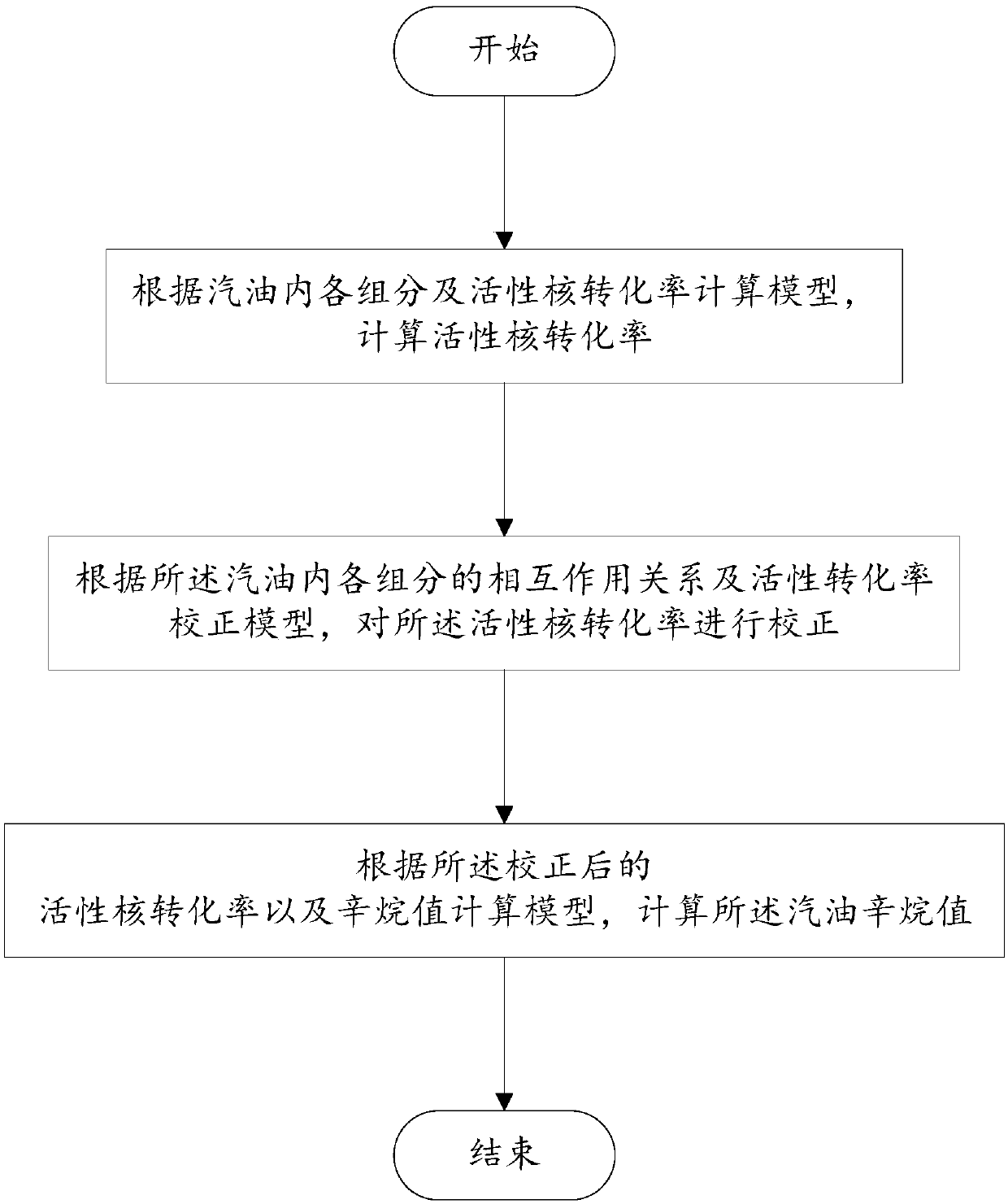Method for predicting gasoline octane value
A gasoline octane number and octane number technology, applied in chemical process analysis/design, molecular entity identification, etc., can solve the lack of in-depth understanding and theoretical research of octane number blending process, the lack of model prediction accuracy and application scope, Limited experimental methods, etc.
- Summary
- Abstract
- Description
- Claims
- Application Information
AI Technical Summary
Problems solved by technology
Method used
Image
Examples
Embodiment 1
[0065] For the three parts of the combination, model 1A, model 2A, and model 3A are selected respectively, and the octane number of pure hydrocarbons is substituted, and the intermediate parameters are simplified to obtain the octane number prediction model expression 1A-2A-3A based on the detailed composition of gasoline:
[0066]
[0067] in, P represents the components considered to be involved in the correction of the conversion rate of active nuclei in Model 2, Among them, ρ i is the relative density of component i, M i is the relative molecular weight of component i. ON i is the octane number of each pure component, which is a known parameter, υ i is the volume fraction of component i, β i , a is the parameter that the model needs to regress, where, β i The initial value of can be obtained from the density and molecular weight of component i.
[0068] The model expression obtained by this combination is similar to the formula obtained by Exxon Company through...
Embodiment 2
[0071] For the three parts of the combination, model 1A, model 2B, and model 3A are selected respectively, and the octane number of pure hydrocarbons is substituted, intermediate parameters are simplified, and the octane number prediction model expression 1A-2B-3A based on the detailed composition of gasoline is obtained:
[0072]
[0073] Among them, I mix =∑ ij t ij no i no j , t ij It is the interaction parameter between component i and component j that needs to be considered in the correction of active nuclear conversion rate in model 2, and is obtained by model regression.
[0074] Also use the method in Example 1 to obtain parameter β i Initial value, use the data regression parameters, and verify the prediction effect of the expression. like Figure 4 As shown, the abscissa is the octane number actually measured by the sample, the ordinate is the octane number calculated by the model, "*" is the model parameter training set, "+" is the model parameter test ...
Embodiment 3
[0076] For the three parts of the combination, model 1A, model 2A, and model 3B are selected respectively, and the octane number of pure hydrocarbons is substituted, intermediate parameters are simplified, and the octane number prediction model expression 1A-2A-3B based on the detailed composition of gasoline is obtained:
[0077]
[0078] Each parameter in the formula is identical with embodiment one.
[0079] Also use the method in Example 1 to obtain parameter β i Initial value, use the data regression parameters, and verify the prediction effect of the expression, such as Figure 5 As shown, the abscissa is the octane number actually measured by the sample, the ordinate is the octane number calculated by the model, "*" is the model parameter training set, "+" is the model parameter test set, and the results show that the standard deviation is 0.532 .
PUM
 Login to View More
Login to View More Abstract
Description
Claims
Application Information
 Login to View More
Login to View More - Generate Ideas
- Intellectual Property
- Life Sciences
- Materials
- Tech Scout
- Unparalleled Data Quality
- Higher Quality Content
- 60% Fewer Hallucinations
Browse by: Latest US Patents, China's latest patents, Technical Efficacy Thesaurus, Application Domain, Technology Topic, Popular Technical Reports.
© 2025 PatSnap. All rights reserved.Legal|Privacy policy|Modern Slavery Act Transparency Statement|Sitemap|About US| Contact US: help@patsnap.com



